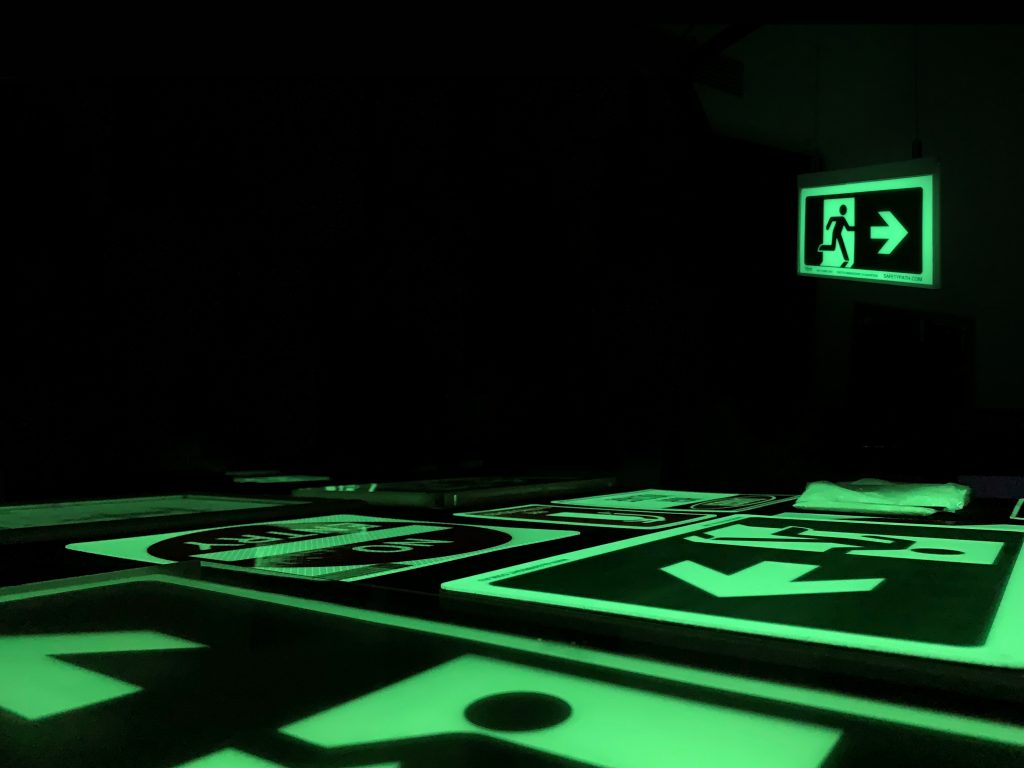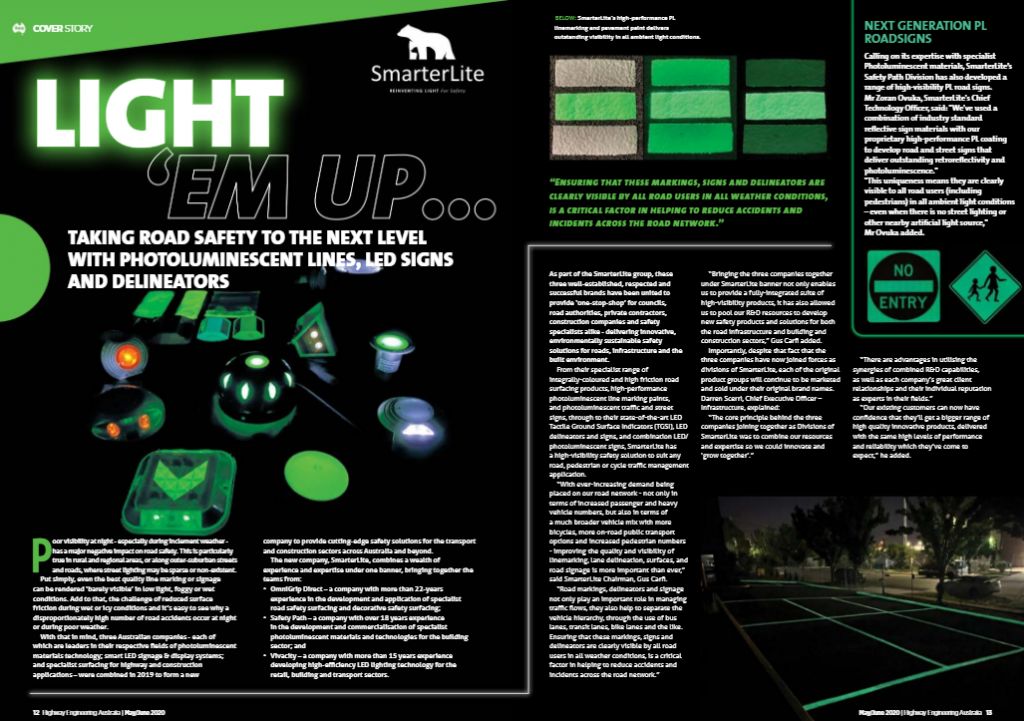
Road Safety Innovations
5 minute read
November 8, 2021
In August 2020, Safety Path, Vivacity and OmniGrip Direct were invited by the Municipal Works Operations Association (MWOA) to present on road safety innovations. The MWOA is a not-for-profit member-based association that was established to serve professionals involved in all aspects of municipal works.
Safety Path Photoluminescent Linemarking and Road Sign Innovations
Zoran Ovuka, SmarterLite and Safety Path’s Chief Technology Officer, spoke about Safety Path’s innovations with photoluminescence for road linemarking, pavement marking and road signs. With 38% of deaths on Australian roads being at night, road managers need affordable ways to reduce risk and assist drivers on high-risk sections of roads.
Road lighting is the traditional means to reduce risk at night, but it has major drawbacks:
- slow to install, requiring engineering design and complicated approvals
- expensive to install, requiring engineered footings and poles, and expensive electrical connections in rural areas
- every roadside pole becomes a new roadside hazard, increasing risk and requiring special poles or crash barriers.
Safety Path photoluminescent linemarking, pavement marking and road signs provide an affordable treatment for high risk locations. Photoluminescence is an additive benefit – the signs and lights are also reflective in accordance with Australian standards.
Photoluminescent signs and lines are visible even when not directly illuminated by a motor vehicle’s headlights, guiding drivers and motorcycle riders through bends, over crests and through dips, as well as unlit rural intersections.
Click on the image to watch Zoran Ovuka explain the development of the technology used in Safety Path’s photoluminescent linemarking and road signs and how it will transform night-time road safety.

Vivacity LED Road Safety Technology
Gary Commane, Chief Executive of Vivacity traffic communications and smart lighting, spoke about a range of LED solutions for road safety and public safety;
- LED Safety Tactile block (TGSI)
- LED and solar/LED pavement markers
- LED plug ‘n’ play solar safety lights
- LED parking meter information signs
- Hybrid LED/photoluminescent signs
The Vivacity LED Safety Tactile is a Tactile Ground Surface Indicator (TGSI) that incorporates LED lights. Connected to traffic signals, they change colour with the traffic signal pedestrian light – showing red when pedestrians should not cross the road, and green when they can. Used at an unsignalised crossing, they can be set to be a steady yellow light or flashing yellow light to meet the requirements of the road manager.
LED Safety Tactiles are a more human-centred design for pedestrian safety at traffic signals. Until now, the only visual cue has been the standard small red/green ‘man’ signal located across the width of a road – a signal that can be hard to see for younger and older pedestrians, people with a vision impairment, and people walking in dense crowds. The LED Safety Tactile brings the important visual safety message to the same side of the road as the pedestrian.
The Vivacity LED Safety Tactile is manufactured to the height dimensions of the Australian Standard for TGSI. With internal LED lighting within the TGSI, they meet the Australian Standard’s requirement for contrast with the surrounding footpath.
Gary also discussed the Vivacity Solar Safety Light that can be used by public transport operators, Councils and State Governments to quickly light public spaces and bus and tram routes. The solar light, with motion sensor, is designed to fit to existing poles used for signs, including bus stop poles.
Using the Vivacity Solar Safety Light removes the need for:
- time consuming engineering design and planning
- engineered concrete footings and poles
- time consuming electrical connections
- unsightly additional roadside poles, creating a new roadside safety hazard
- expensive construction and traffic management.
The Vivacity Solar Safety Light can be fitted with 10-15 minutes, and doesn’t require specialist trades.
Click on the image to watch Gary Commane explain each innovative LED road safety technology.

OmniGrip Direct’s Safety and Decorative Recycled Surfaces
Aaron Whitehead, Business Development Manager for OmniGrip Direct spoke the injury reducing and life-saving features of OmniGrip Direct’s High Friction Surface Treatment (HFST), OmniGrip HF. There are many applications for HFST, including urban and rural intersections, bends, steep descents and small-radius curves.
High surfaces are more widely used in the UK and the USA, where it has become a standard crash reduction treatment. In the US it forms a critical part of the Federal Highway Administration’s strategy to “keep drivers in their lane” as a primary method of reducing crashes.
Within Australia, OmniGrip Direct has more than 20 years experience applying OmniGrip HF as a crash-reduction treatment. However, Australian has been, in a general sense, slow to adopt this simple crash reducing technology despite overwhelming international evidence about its effectiveness.
Aaron also spoke about OmniGrip CST, a durable coloured recycled-glass surface that maintains its colour and texture longer than paint-based products, at a lower lifetime cost. OmniGrip CST is used for coloured bicycle lanes, bus lanes and pedestrian crossings, as well as speed pads, gateway treatments and even pavement marking messages.
Contractors using OmniGrip CST on major transport infrastructure projects will be compliant with the State’s Recycled First policy.

The edited video of the MWOA webinar can be watched below and more information can be obtained from the links in this article or by telephoning 1300 244 569.
To receive updates about SmarterLite and OmniGrip Direct’s innovations and services please sign-up to our email newsletter.
OmniGrip Direct, part of the SmarterLite Group, is a platinum sponsor of the MWOA.



